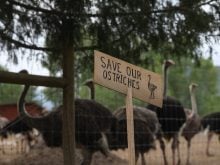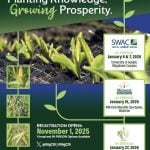LARONGE, Sask. – The grain piles high in the hopper. Harvest is late this year.
Pass after pass over the field brings in what looks to be an average crop. It’s a fall scene like many others across the West, except this combine floats a metre above the soil, and the soil sits on the bottom of Bigstone Lake, near LaRonge, Sask.
John James Charles looks to the sky as a light rain falls.
“As long as it only rains like this it’s OK. If it rains any harder though, the plants will shell out and drop the rice into the water. The weather is the greatest factor at harvest time,” he said.
Read Also

VIDEO: Agritechnica Day 4: Robots and more robots, Nexat loves Canada and the trouble with tariffs
Agritechnica Day 4: Robots and more robots, Nexat loves Canada and the trouble with tariffs.
Charles is harvesting wild rice. He and other rice farmers work against weather and time. Hail, wind or frost can end a harvest prematurely and high or low water levels can spell disaster in the spring.
This harvest is Canada’s oldest, dating from before European colonization. But like farming everywhere, rice growing has seen rapid change in recent years.
“It’s a lot faster than it used to be. When I was a kid we did it all by hand. It was something the whole family took part in. We would all get together to bring in the crop.
“Now it’s all business. The air boats, the processing, the marketing. It’s all about the bottom line,” said Charles.
At $1.54 per kilogram, wild rice is valuable, but it has not seen a price increase in more than 10 years.
More than 1.2 million kg of rice are harvested in the LaRonge area each season.
“All of our expenses have risen, but the price of green rice has stayed the same to the producer. Gas, leases, seeding, the cost of buying and maintaining air boats, cost of living, everything has gone up. It’s just like farming in the south,” said Wally Paratta, of LaRonge Industries.
Paratta’s family has been in the wild rice business for years and harvests about 260,000 kg of rice each year on leased lakes and rivers throughout north-central Saskatchewan. The family also maintains and sells boats, harvesters and equipment.
“Even with all the things that can go wrong, there is still nothing better than the smell of the fall air early in the morning or the site of a full load of rice,” said Charles.
The rice harvest is performed with aluminum air boats fitted with headers that beat rice stalks as the boat passes through the crop.














